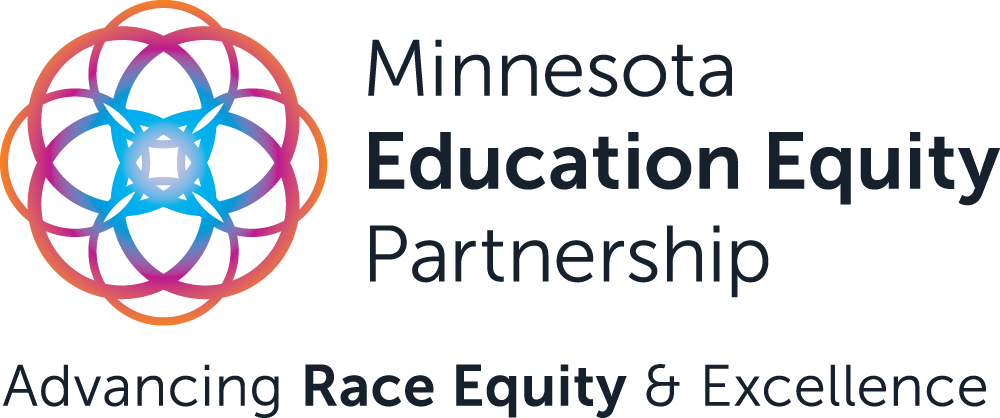
Why your school’s mission, vision, values, and goals must reflect race equity
Race Equity for Accelerating Learning (REAL) Act and The CLEAR Model:
Why your school’s mission, vision, values, and goals must reflect race equity to achieve a new and better condition for students, staff, and families/community resulting in better academic outcomes for learners.
MnEEP is committed to re-energizing a strong and powerful race equity and excellence in the education movement through building consciousness, conviction, and commitment (see The 3 C’s of Change, the CLEAR Model, and I3).
We call this commitment to re-energizing a strong and powerful race equity and excellence in education policy agenda in Minnesota the REAL CLEAR Movement.
The MnEEP REAL CLEAR Movement in education is about organizing advocates from community, family, and systems into a critical mass of advocacy for building policy proposals that promote race equity and excellence in all aspects of P-20 education in Minnesota and aligned to the Governor’s Due North Plan.
MnEEP will be focusing its policy advocacy on a specific set of proposals called the Race Equity for Accelerating Learning (REAL) Act in order to accomplish the goal of achieving a new condition in Minnesota education we call race equity.
In that regard, MnEEP is partnering with communities, families, schools, districts, and organizations to re-envision what it looks like and means to have true racial equity in Minnesota education.
Mission and vision matter to any organization. They are the basis for how leaders and staff make and execute decisions, and how they monitor progress and social impact. A mission statement is the North Star that guides the organization. It asks: Why do we exist?
The vision is the future you want to build actively. It answers the question: What must we become to advance our mission?
At a recent staff retreat with a suburban K-12 school, I worked alongside school leaders and educators to reflect on how the current mission and vision center race equity as a statewide movement to gain better educational outcomes for People of Color and Indigenous (POCI), and to engage in a process for developing new statements that align with clear equity-centered goals.
Two essential questions the group explored were:
Question #1: What challenges do the mission and vision pose, as currently written, for equity in education?
Question #2: What is the number one challenge of the mission and vision, as currently written, for equity in education?
These questions and answers are critical to the process of developing Race Equity Frameworks. A Race Equity Framework must include an equity-centered:
- Mission Statement
- Vision Statement
- Values, principles, and/or belief statements
- Equity Statement
- Equity Policy* according to the board-established process for a Local Education Agency (LEA) / School District.
A Race Equity Framework is a critical component of advancing racial justice for students and communities, which requires:
Assessing the state of equity (district assessments) and families and student input for equity visions.
Developing a Racial Equity Framework: reviewing mission, vision, and values for racial equity priorities.
Training Board and Staff around racial equity. Creating Equity Plans.
Through curricula and community engagement, following equity principles.
Centering equity in policy, practice, and narrative-building. Creating an Equity Action Plan to hold accountable the whole system.
How a mission change builds meaningful change
When districts engage in building a Race Equity Framework, the difference in mission and vision–and the district’s impact on advancing equity–is stark.
Here are two examples of how districts have adjusted their mission and vision after building a Race Equity Framework alongside MnEEP.
Mankato Area Public Schools
Previous Mission
“Assuring learning excellence and readiness for a changing world,” was reviewed at the strategic retreat for an update with new and refreshed racial equity input.
While the statement honors the past, the working groups concluded that a new statement could be more inspirational and reflect the urgency of equity within the community—and its impact on an ever-changing global society.
New mission after MnEEP retreats
“Mankato Area Public Schools (MAPS) is committed to working together equitably, with families and communities so that each child has the knowledge and skills to be successful and contributing citizens in a diverse global society.”
Avalon Charter School
Previous mission
”Avalon School prepares students for college and life in a strong, nurturing community that inspires active learning, engaged citizenship, and hope for the future.”
New mission after MnEEP retreats
“Avalon School seeks to establish a just world by nurturing an equitable school community for students that inspires active learning, social justice, engaged citizenship, and hope for the future.”
Do you see a clear difference?
Does your school or district center equity in the same way—in its mission (why we exist) and vision (what must we become to advance our mission)?
Mission and vision statements are essential to building progress, advancing racial equity, and ensuring that each child is uplifted in all education environments.
Portland Public School (PPS) data, for example, shows that when PPS redefined its mission and vision to reflect equity goals, the district improved learning and racial equity–closing equity gaps between Black and white students in five schools, and increasing school administrator diversity by 48 percent.
However, we know that mission and vision statements can’t simply stand alone. They are a promise to act—a promise to center equity and student hope and opportunity in all efforts, plans, activities, and monitoring of racial equity progress.
Minnesota still has the deepest racial disparities in the country. This we know–and this still isn’t changing. It’s imperative that districts and administrators do more.
Now is the time for districts and school leaders to rethink and revise their mission and vision statements. And to commit to a promise to advance racial equity, so we can build a Minnesota where each student can become their fullest self.

